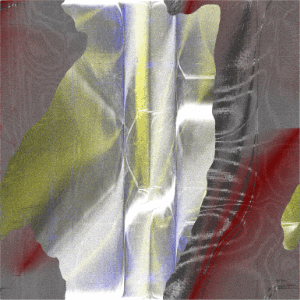Resplendent in founder Jon Wozencroft’s distinctive sleeve designs, Touch is always mindful of quality both aesthetically and musically, and continues to deliver the best in experimental electronic listening music that is high in concept and creativity.
Touch has long been a label that embraces experimental electronic music by an array of respected musicians, many who have released material over an extended period of time through the label. Resplendent in founder Jon Wozencroft’s distinctive sleeve designs, Touch is always mindful of quality both aesthetically and musically, and continues to deliver the best in experimental electronic listening music that is high in concept and creativity.
 Eleh :: Location Momentum (Purchase)
Eleh :: Location Momentum (Purchase)
Although Eleh is rumoured to have existed since 1999, little is known about the musician(s) behind the project. With many vinyl albums to its name, mostly in limited formats on the US label Important Records but also on Taiga and latterly for UK label Touch, the honour of releasing Location Momentum, the project’s first digital release, again falls to Touch.
Consisting of five mostly lengthy tracks, Location Momentum continues Eleh’s exploration of analogue synthesis and low frequency oscillation. Album opener, and the longest track on the album at over 20 minutes, “Heleneleh” is an ideal example of Eleh’s low frequency oscillation experimentation. The changes in frequency are subtle but the track as a whole is highly immersive and meditative but not without a tinge of melancholy. After a short burst of strange throbbing reversed tones in the form of “Linear to Circular / Vertical Axis”, “Circle One: Summer Transcience” initially presents a more urgent, insistent tone than “Heleneleh”. A bassy pulse somewhat akin to an anxious heartbeat throbs as a drone alternates between arctic winds and static haze before slowly dissipating to close with the sound of the desert at night and a huge surge of sound from a jet plane taking off. Returning to the gentler tones of “Heleneleh” is “Observation Wheel” with its sombre deep sub-bass tones slowly undulating to the point of distortion like the ghostly creaks and groans of a long lost shipwreck. The last of the tracks, “Rotational Change for Windmill”, utilises a consistent industrial fan like throb under a (strangely non-intrusive) rapid electronic bleeping that slows to a complete stop at the midpoint before introducing strange metallic scrapes like attempts at communication from the other side.
At the core of Eleh’s work are deep undulating drones that roll as they very subtly shift in tone and frequency over time, heaving and resonating slowly and deliberately. Some may find this kind of music too repetitive or simplistic but taking the time to listen and immerse oneself in it results in a very calming and meditative experience that skilfully walks the line between light and dark. (4/5)
[soundcloud url=”http://api.soundcloud.com/tracks/9552920″ params=”show_comments=true&auto_play=false&color=000000″ width=”100%” height=”81″ ]
::…:…:…….::::…::..::::…..:::.:…….::::…::.:…….::::…:::…..:::.:…….:::
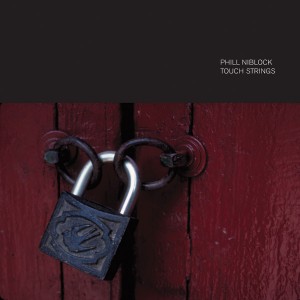
Phill Niblock :: Touch Strings (Purchase)
Where Eleh’s Location Momentum explores low frequency oscillation, Phill Niblock’s Touch Strings is a conceptual album that experiments with the minutia of sound, both sharing a common objective; to examine and explore the physical emotions and responses sound can generate within the listener. The sleeve notes go into great detail about the recordings including the background to them, the musicians, the concept and technical details of how they were recorded. It makes fascinating reading even for those not technically gifted in the art of music making.
Spread across two discs, Touch Strings consists of three separate recordings based on guitar, cello and a string ensemble. The first, “Stosspeng,” is an hour-long piece that uses the left and right channels to deliver two sustained chords played by different guitarists which Niblock then adjusted the pitch for. The result is a hypnotic piece based on a deep prolonged tonal drone that gently shifts and oscillates over time. Probably not to everyone’s taste but the low drone has a certain soothing quality despite its dark undertones. The 23 and a half minutes of “Poure” utilises a similar concept but with different notes and with cello as the source, tuned to specific sine tones and fed through an oscillator. The output from this experiment is similar to “Stosspeng” but with a crisper tone and pitch, the drone produced being edgier and portraying more tension. As the layers build and the notes become denser the drone becomes organ-like, as if vibrating like an orchestra of accordions all playing sustained notes at the same time. The final musical piece in the trio is “One Large Rose” which is an elongated extract from a shorter piece entitled ‘Three Orchids.” Each of the four musicians were recorded in one 46 minute take playing a single string based instrument to produce microtones, subtly changing elements of the composition with each recording to create new microtones. Each musician was recorded four times and each of the four recordings (the piano was recorded with two microphones) was then synchronised into the single unaltered 20 track piece that appears on Touch Strings as “One Large Rose.” The result is similar in style to “Poure” in that there is an ever-present drone of combined string tones but with the ever-changing, almost metallic buzz of bow on strings. The various layers of sound combine to produce a rich consistent tone but also interact and slowly mutate, sometimes ebbing and flowing, to form layers that continually shift and mutate throughout. (3.5/5)
::…:…:…….::::…::..::::…..:::.:…….::::…::.:…….::::…:::…..:::.:…….:::
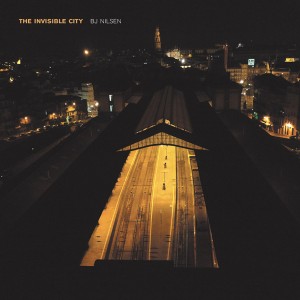
BJ Nilsen :: The Invisible City (Purchase)
BJ Nilsen’s The Invisible City has more in common with Niblock’s Touch Strings than Eleh’s Location Momentum in that it is composed from a diverse and carefully selected collection of sound sources ranging from specific instruments to the sound of a chair being dragged across a floor and field recordings of birdsong. As is apparent from Niblock’s attention to detail, Nilsen meticulously lists all the sources used for each track in the sleeve notes for the album as though the source and inspiration for each track is as important as the composition itself. Consisting of extended passages of gentle often atmospheric ambience punctuated with short bursts of abrasive high-pitched sound, The Invisible City is partly an album of contrasts but also a testament to the creative use of diverse sound sources, some of which are highly processed, some of which are left untouched.
Opening with the lengthy “Gravity Station,” The Invisible City sets the scene with a steady electrical buzz and an array of digital chatter somewhat akin to the incidental music of an edgy indie movie. The fascinating thing is that neither of these things are listed as sound sources, meaning that Nilsen has created them from unrelated sounds, manipulating them to produce something completely new. During its second half, the track takes on a more sinister theme by combining deep eerie shifting tones, rattling roller blinds and tense lingering synths to give it a distinct horror movie touch. “Virtual Resistance” is another long track that clocks in at just under 15 minutes and starts off with grating feedback but quickly switches mood to wonderfully smooth languid tones before a short pause leads into tense creeping atmospheres intensified by occasional guitar strums before ending on the sound of deep snow crunching under foot. Continuing the tense atmospheric theme is “Gradient” which combines a deep vibrating drone with echoed guitar to create a serene but darkly ominous 11 minute track complete with church-like Hammond organ for added atmosphere. Perhaps the most disturbing of the tracks however is “Into Its Coloured Rays” which begins with glistening radiant beauty but descends into a unsettling cycle of demonic confusion.
The Invisible City reflects the mood of a sprawling metropolis from its eerie stillness at the dead of night through to the bustling chaotic noise of rush hour. Depicting its subject in a number of ways through a number of contrasting sonic interpretations, Nilsen portrays the imagery from an intimate and personal viewpoint that is a generally dark and often scary picture. Punctuated with passages of aggressive noise between longer periods of uneasy calm, the transitions between tracks are sometimes deliberately stilted to represent the stark contrasts the city can hide beneath its neon lit veneer. (3/5)
All releases above are out now on Touch.






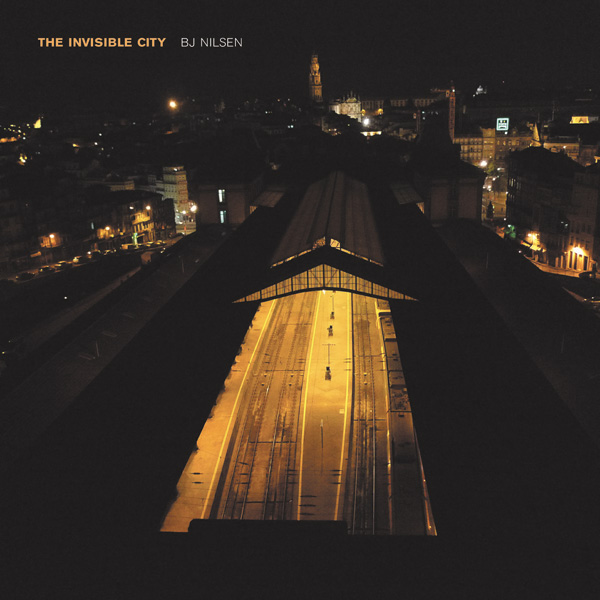
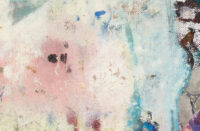
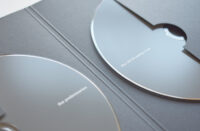





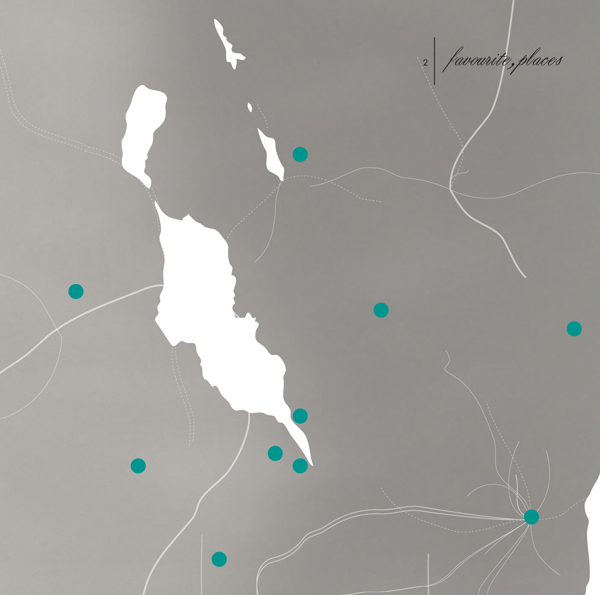



![Pole :: Tempus Remixes (Mute) — [concise]](https://igloomag.com/wp/wp-content/uploads/2025/04/pole-tempus-remixes_feat-75x75.jpg)






![Hasbeen :: Bunker Symphonies II (Clean Error) — [concise]](https://igloomag.com/wp/wp-content/uploads/2025/04/hasbeen-bunker-symphonies-ii_feat-75x75.jpg)
